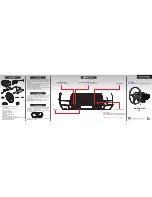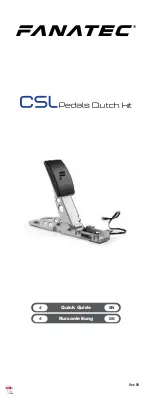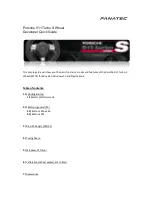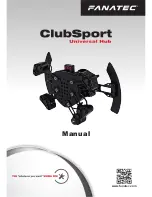
UM-HV1-13-11
VDO TPMS GO user guide
Page 30/32
When the red LED turns off, the charge is
complete.
About the Charger
Do not use the charger in a high moisture
environment. Never touch the charger when your
hands or feet are wet.
Allow ventilation around the charger when using it.
Do not cover the charger with paper or other
objects that will reduce cooling. Do not use the
charger while it is inside a carrying case.
Connect the charger to a proper power source.
The voltage requirements are found on the
product case and/or packaging.
Do not use the charger if the wires become
damaged. Do not attempt to service the unit.
There are no serviceable parts inside. Replace
the unit if it is damaged or exposed to excess
moisture.
This charger is not a toy and should not be used
by children or infirm persons without proper
training or supervision.
Do not use it as a power source.
Unplug it before attempting to service or clean it.
About the Battery
CAUTION: This unit contains an internal
Li-Po battery. The battery can burst or explode,
releasing hazardous chemicals. To reduce the risk
of fire or burns, do not disassemble, crush, pierce
or dispose of the battery or the instrument in fire
or water, do not short circuit or short the contacts
with a metal object.
Use a specified charger approved by the
manufacturer and supplied with the device.
The tool must be returned to the factory for
battery replacement.
Opening the tool or tampering with the
seal placed on the tool, if broken will void
the warranty.
Safety for Li-Po battery use
NEVER
leave the battery unattended during the
charging process. The device must imperatively
be placed on a non-flammable surface during
charging (ceramic platter or metal box).
Charge the Li-Po battery
ONLY
with the charger
provided.
If the battery begins to overheat more than
60°C
(140° F),
IMMEDIATELY STOP
the charge. The
battery should
NEVER
exceed
60°C
(140° F)
during the charging process.
NEVER
charge the battery immediately after use
and while still hot. Leave it cool down to ambient
temperature.
If you see smoke or liquid coming out of the
battery, stop the charge immediately. Disconnect
the charger and place the tool in an isolated area
for at least 15 minutes.
DO NOT USE THE
BATTERY AGAIN
, but return the device to your
seller.
Keep a fire extinguisher for electrical fires handy
while charging the battery. In the unlikely event
that the Li-Po battery ignites,
DO NOT
use water
to extinguish the fire, take some sand or a fire
extinguisher as described above.
This must neutralize the battery elements so that
they are unusable. The neutralization process
must be performed with very strict security fit. It is
recommended that you return the tool to us, so
that we can collect the out of use battery and give
this to a specialized recycler.
Do not dispose of Li-Po batteries in the
dustbin.
The Li-Po battery is not suitable for children under
14 years. Do not let a Li-Po battery reach of
children.
To prevent leakage or other hazards, do not store
batteries above
60°C
(140°F). Never leave the
battery inside a car (for example) where the
temperature could be very high or in a place
where temperatures could exceed
60°C
(140°F).
Store the battery in a dry place to avoid contact
with liquid, whatever the type. Store the battery
only on a nonflammable surface, heat resistant,
non conductive and away from all flammable
materials or sources. Always store the battery out
of reach of children.
A Li-Po battery should be stored with a minimum
charge of 30%. If you store completely
discharged, it will quickly become unusable.
If you don't follow these safety precautions, you
may cause serious personal injury and damage to
property; you may even cause a fire!
The
c
ompany disclaims any responsibility for
damage sustained in case of non compliance with
these safety instructions.
Using a Li-Po battery has a high risk of fires and
can cause serious damage to property and
persons, the user agrees to accept the risk and
responsibility.
As the
c
ompany cannot control the proper use of
the battery by each customer (charge, discharge,
storage etc.); it cannot be held responsible for
damage to persons and property.




































